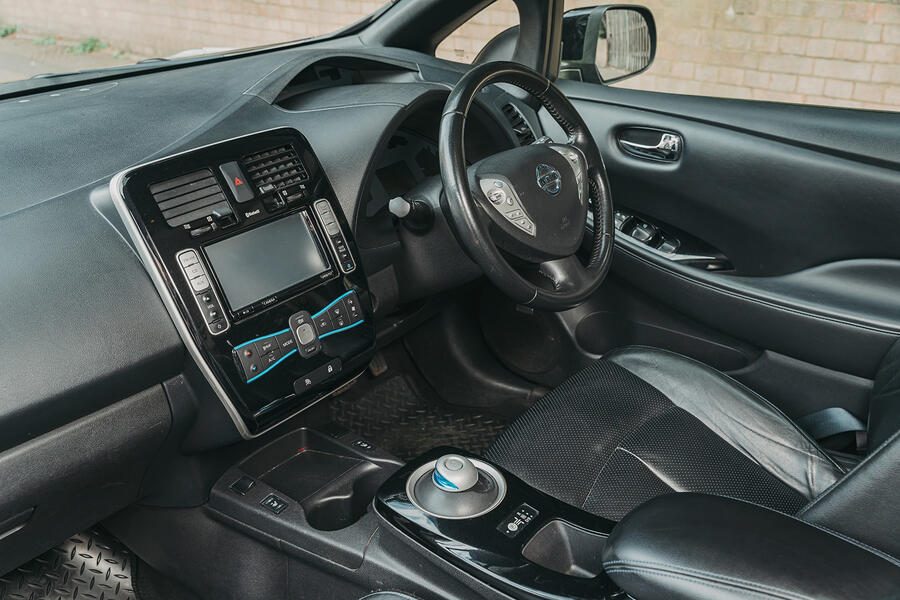It’s been about five years since BMW pulled the plug on the rear-wheel-drive 1 Series, which ran for two generations: the E87 (available in four body variants) and the F20 (sold as a three- or five-door hatchback). The manufacturer introduced the F40 in 2019, and while it got mixed reactions at the time, especially for being front-wheel drive, it actually sold well, and now it’s been heavily revised to bring it in line with the rest of the lineup.
The result is the F70, and even though BMW calls it an all-new model, it really isn’t. It’s now the only F series model in the lineup, along with the F74 2 Series Gran Coupe, which is also a heavily revised version of its predecessor and basically just a sedan version of the F70. Seeing it from the side, it’s very easy to tell it’s basically the same car as before, but the new front and rear, as well as some other details, do help it stand out and look new.

The version I drove was a 120d, the most powerful diesel available, with the M Pack and a few options. I was surprised to see that BMW essentially nerfed the B47 in the F70 because it makes less power than in any other 20d application. It still feels quick and makes light work of moving the car, but I just can’t understand why it’s detuned when it makes up to 200 horsepower in other applications.
It was a likable car overall, even with a (detuned) diesel mill under the hood, and you can certainly see the progress over the F40 in many areas. But it’s also a step back in others.
2024 BMW 120d Hatchback
Good
- Good Driving Dynamics for a FWD
- Advanced Technology and Features
- Fuel efficient
Bad
- Detuned Engines
- Ergonomic and Usability Issues
- Premium Pricing for Options
Exterior Design

When I saw the first photos of the F70 online, like so many other people, I immediately thought Kia Ceed. Putting photos of these two cars side by side, there appears to be a strong resemblance when it comes to the shape of the front end, the design of the headlights, and even the outline of the grille. However, when I saw it in person, it looked a lot less Korean, although it’s still an unusual fascia even by modern BMW standards.
The wheelbase is exactly the same as before, but the F70 has slightly longer overhangs and is a bit longer overall. I bet the doors are interchangeable with the outgoing F40.
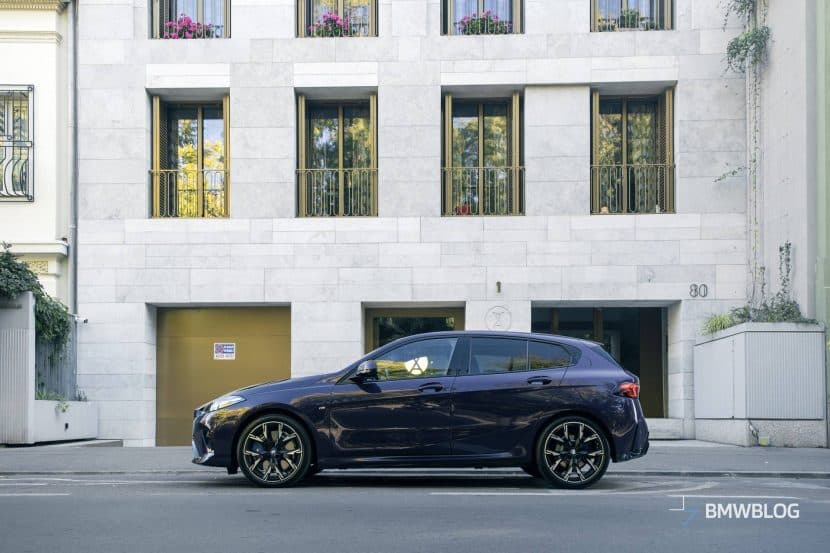
From the side, it looks almost identical to the F40, except for the new wheel designs and the new front and rear sections. You can also see that the grille appears to be slanted forward slightly, giving the car a slight shark nose look. Like all new BMWs, it has the model series (in this case 1) stamped into a piece of plastic trim on the C-pillar, which is subtle, but it also makes the car look a bit more special.

The rear lights have a very similar design to those on the iX2 and X2, and they seem a bit oversized for the 1 Series, but the light signature that you see at night is pretty cool, so overall I think they look good. What I wasn’t too happy about was the fact that the exhaust tip faces down and is hidden under the edge of the rear bumper. Even in my M pack tester, which looked really aggressive, BMW decided it wasn’t worth having a nice double tip.
The only F70 variant that has visible exhaust tips is the M135, which gets a healthy set of quad exhausts that completely transform the look of the rear. Just a single double-tipped exhaust would have sufficed in lesser models. My tester had the 19-inch Y-spoke wheels and blue-painted M-branded brake calipers, which made it look a lot more aggressive than it had any right to be with its level of performance.
My tester’s Thundernight purple paint was a great choice for the car, which turned a lot of heads when I was driving it through Bucharest, even if it’s a city that’s saturated with BMWs, which you see everywhere, and people don’t pay much attention to them. But they did pay attention to the purple 1 Series that I drove, which goes to show how big a difference the color makes.
Interior

The interior is where it fell a bit short for me, even though at first glance it looked fantastic. Just like most new BMWs, it eliminates many physical controls and forces you to go through the infotainment or use voice commands to reach various functions. Adjusting the climate on the central screen instead of through dedicated buttons and knobs whose position you learn by muscle memory (allowing you to keep your eyes on the road more) is not a great solution.
No matter what automakers will say about how they’re making cabins look modern and minimalist, they’re eliminating buttons to cut costs and aren’t necessarily passing the savings on to the customer. Thankfully, some automakers have announced they are bringing buttons back, so hopefully BMW will follow suit, although there’s a chance we will get even fewer buttons in the new Neue Klasse series…
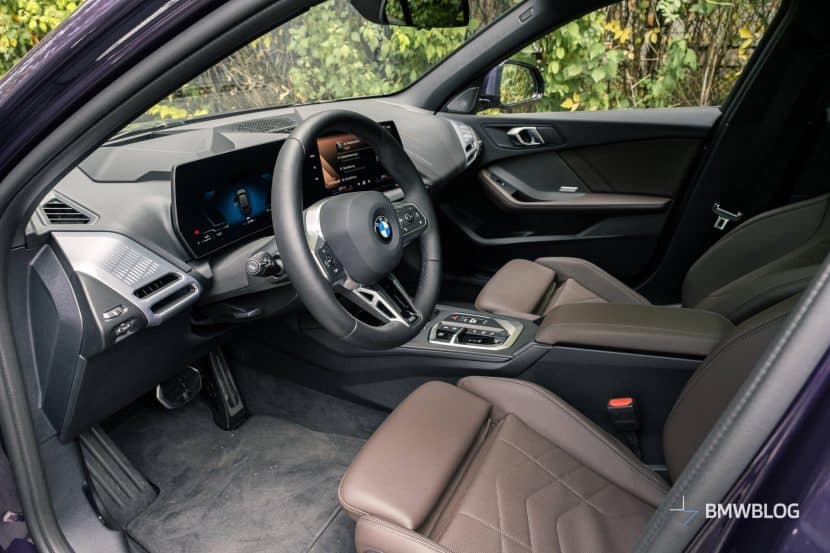
When you open the driver’s door, the interior makes a great first impression. You see the redesigned steering wheel, which looks good and has physical buttons. You also see the two curved screens, one in the center and one in front of the driver, which run the Android-based iDrive 9. This new infotainment works well for the most part, although I had issues with my phone disconnecting randomly and some slight performance hiccups.
There are no more buttons on the dashboard center console, and unlike in older BMWs, you don’t have physical controls for the infotainment. There are touch-sensitive shortcuts on the left of the screen, which are handy, but I missed having a rotary knob that clicks to go through the menus, especially while driving.

The quality of the materials inside the F70 is really good in the upper part of the interior. Even rear passengers are treated to soft plastics up top and high-quality-feeling door cards. The hard plastic used lower down in the cabin doesn’t feel very nice to the touch, but it feels very sturdy and durable, so I’ll give it that.

You can’t get real leather in the 1 Series anymore. Base cars have fabric seats with a material partly made out of recycled plastics. Higher trim level cars get Veganza faux leather upholstery, which is what my tester had, and it’s about as close to real leather as you can get without harming animals. The same material also covers the steering wheel, and it feels great there too—let’s see how it looks after 100,000 miles, though, and how well it handles wear.
Front seat comfort is excellent, and you can get quite low in the front seats, making the driving experience feel extra sporty. The rear bench felt like it was slightly raised, giving occupants a better view of the road ahead, although it has to be said that the big front seat with its wide headrest does reduce forward visibility—this is especially true in the M135 with the optional seats whose integrated headrest is even bigger.
Engines

The engine lineup has been slightly slimmed down for the F70, and the top M135 variant makes less power than before in Europe due to the inclusion of a particulate filter. Power drops from 306 hp to 296 hp, although the version sold in Australia has more power at 313 hp (317 PS).
The new 120 (which replaces the 120i) now has the 1.5-liter B38 engine helped by a 48-volt mild hybrid system instead of the 2-liter B48 that powered the F40. It makes less power than before (170 hp versus 179 hp) but exactly the same 177 lb-ft (280 Nm) of torque, and it takes eight tenths longer to sprint to 62 mph (100 km/h) at 7.8 seconds.
The 116, which is the base engine, is the same B38 but detuned to 122 hp and not helped by a mild hybrid. There’s also a 123, which gets the B48 mild hybrid and standard all-wheel drive for 218 hp and a benchmark sprint time to 100 km/h of 6.3 seconds.
Diesel lovers can pick between the 118d and 120d. The former has 150 hp and 265 lb-ft (360 Nm) of torque, which is enough to accelerate to 62 mph in 8.3 seconds. The 120d adds a mild hybrid system for a combined 163 hp and 295 lb-ft (400 Nm), allowing it to accelerate to 62 mph four tenths quicker at 7.9 seconds.

The 120d has less power than in the F40, even though it’s exactly the same engine. In the old car, it made 190 hp and 295 lb-ft without the mild hybrid, allowing that car to sprint in 7.3 seconds. You don’t really notice it much while driving—it feels about the same on the move—but it’s definitely slower.
There’s still plenty of performance from the new 120d, and the car makes the most of it through its revised seven-speed double-clutch transmission, which is both smooth and relaxed when cruising and swift and direct when you put it in sport mode. Taking control of the gears with the paddles is surprisingly satisfying.

The left paddle also has a “Boost” inscription on it, which gives you a temporary 10-second boost to aid with overtaking. I tried it a few times, and I frankly didn’t notice a difference, although I was already in Sport mode every time—maybe if you pull on the Boost paddle in Comfort mode, you will notice a bigger difference. This is a bit like the Sprint mode that you get in some sportier BMWs, which is basically a temporary Sport mode.
Driving

You can’t get the F70 with adaptive dampers that stiffen up in Sport mode. However, M Sport pack cars not only get lower and stiffer suspension, but they also have frequency-selective dampers. This type of passive damper is meant to give some of the advantages of active dampers but without the extra complication and cost.
I frankly didn’t notice anything special about the suspension other than its firmness, which was what I expected from a modern BMW with the M pack. The damping felt very controlled, though, and even with the stiff setup, the car never felt uncomfortable to me, and unlike some other similarly stiff suspension setups, it didn’t feel like it was skipping over bumps or crashing into potholes.
It felt pretty good overall, but it’s still no substitute for a true adaptive setup that completely transforms a car’s character at the touch of a button (or screen nowadays). There’s little body roll through the corners, and the steering is exceptionally precise, giving you confidence to drive the car quickly around some bends, like I did, and I had a surprisingly good time.
Tech
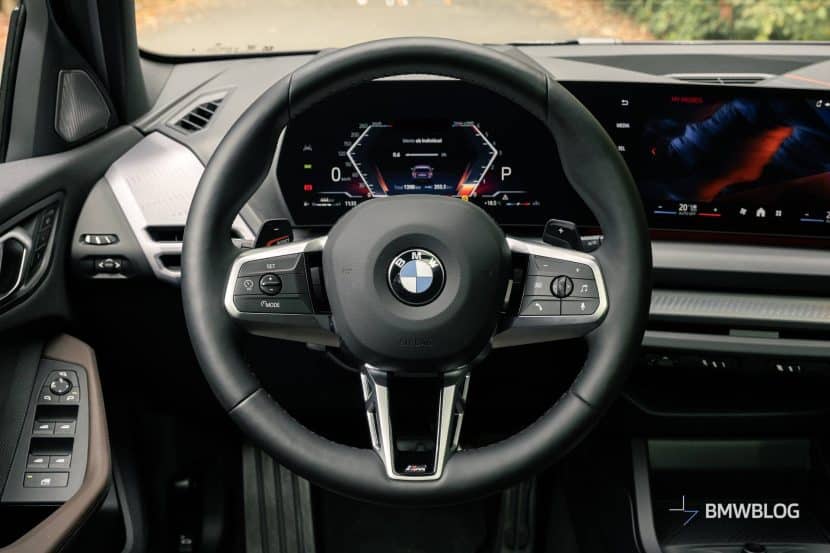
BMW upgraded the 1 Series’ ADAS capabilities, so now it can not only keep a safe distance to the car in front, but it can also stay in its lane and even change lanes automatically. You can also summon it out of a parking spot via the MyBMW app, which is a surprisingly useful feature if you live in a big city with often tight parking spots.
The best thing about turning the car on and driving it out of a parking spot without having to get in is that it will actually go around obstacles if it detects them up ahead.
This isn’t the first BMW with iDrive 9 that I’ve tried, and the system is still not perfect in my experience. I still don’t like the app drawer that you have to scroll through to find stuff, and the system randomly hangs and stutters sometimes, which makes it harder than it has to be to do certain things, especially when you’re driving.
It’s also a bit annoying how some of the tech options are only available as part of packs. BMW has been doing this for years, but it seems to have gotten worse recently, and the F70 is an example of how.
Worth It?

Overall, I liked a lot of things about the F70, even in 120d guise with a detuned engine that makes it slower than its predecessor. It looks good, it has a futuristic and high-quality interior and it drives exceptionally well for a front-wheel-drive car.
The base price for a 116 is about €33,000 in Germany, and it rises to €37,900 for a 120 and €44,000 for the 123 xDrive. The 120d starts at just over €40,000, and my well-equipped press fleet tester cost €54,545. What brought the price up most were the Driving Assistant Professional, Innovation and M Sport packs, which together added up to over €7,000. The excellent Harman Kardon sound system was another €482, while the panoramic sunroof that opens was just over €1,000.
With manufacturers focusing more and more on small crossovers instead of hatchbacks in this size bracket, competition isn’t as stiff as it once was. But the 1 Series is as good as ever, so if you can get over the fact that it’s a front-wheel-drive BMW, it’s a recommendable choice even with the high price and interior ergonomic issues.






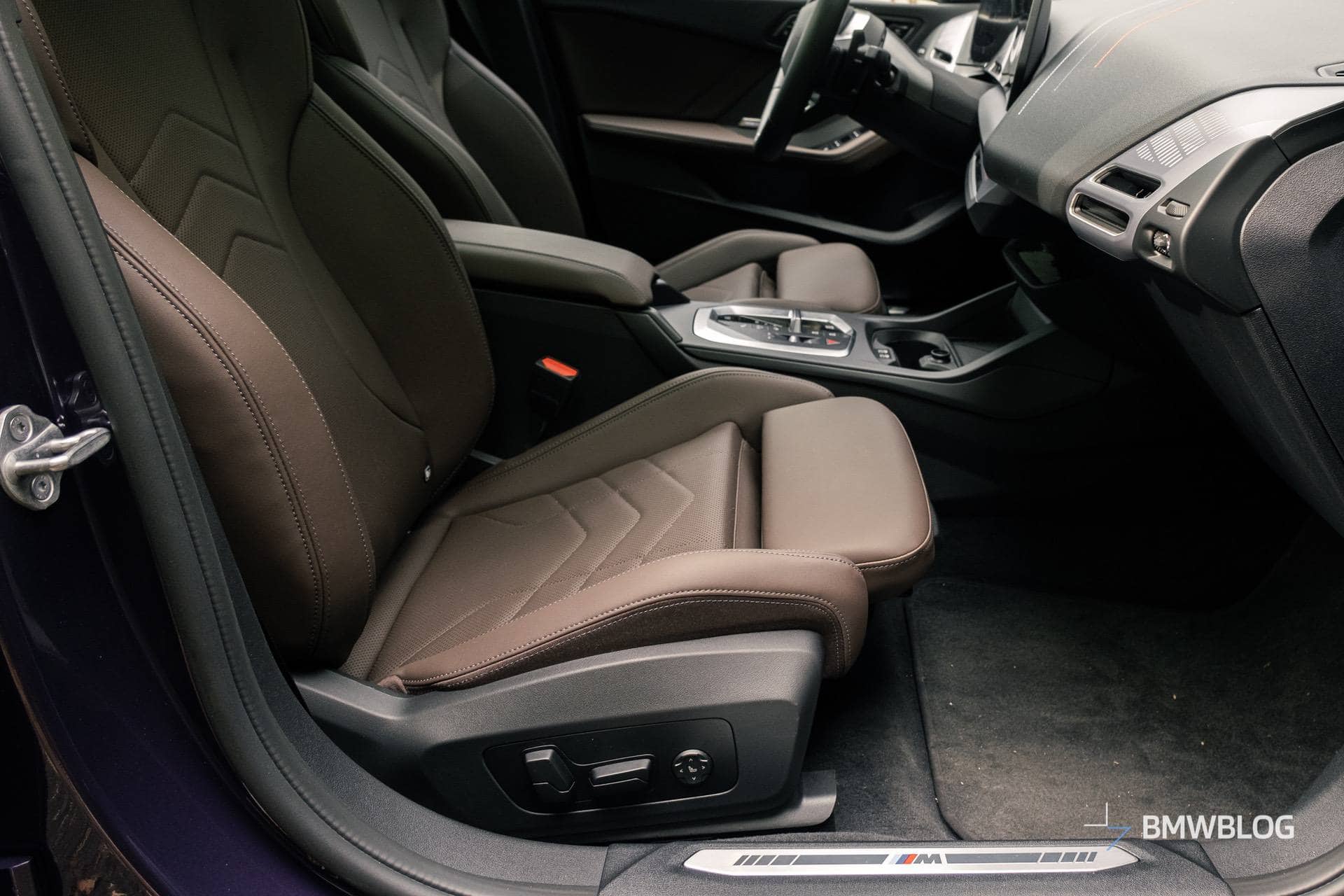























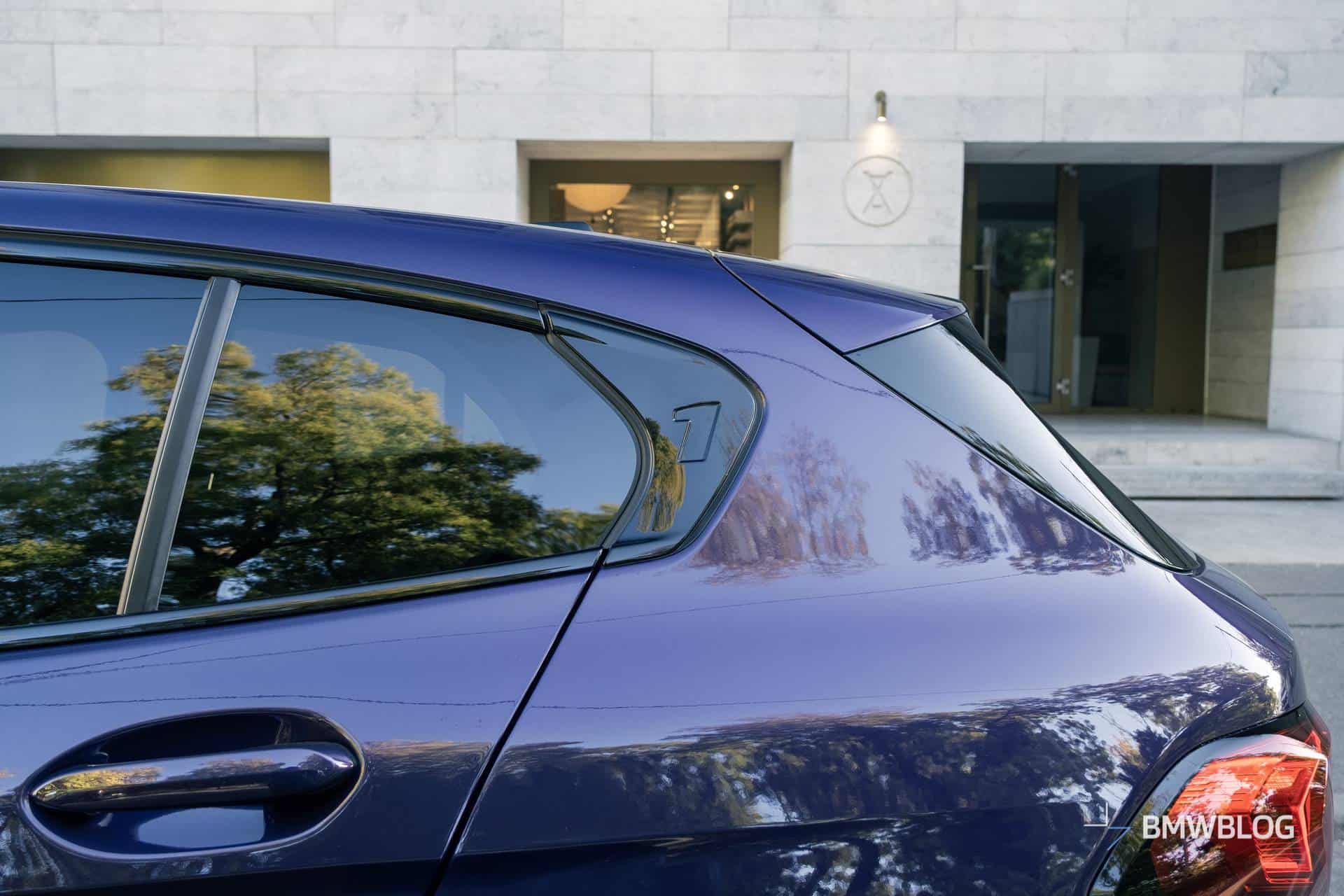








First published by https://www.bmwblog.com
Source: BMW BLOG

